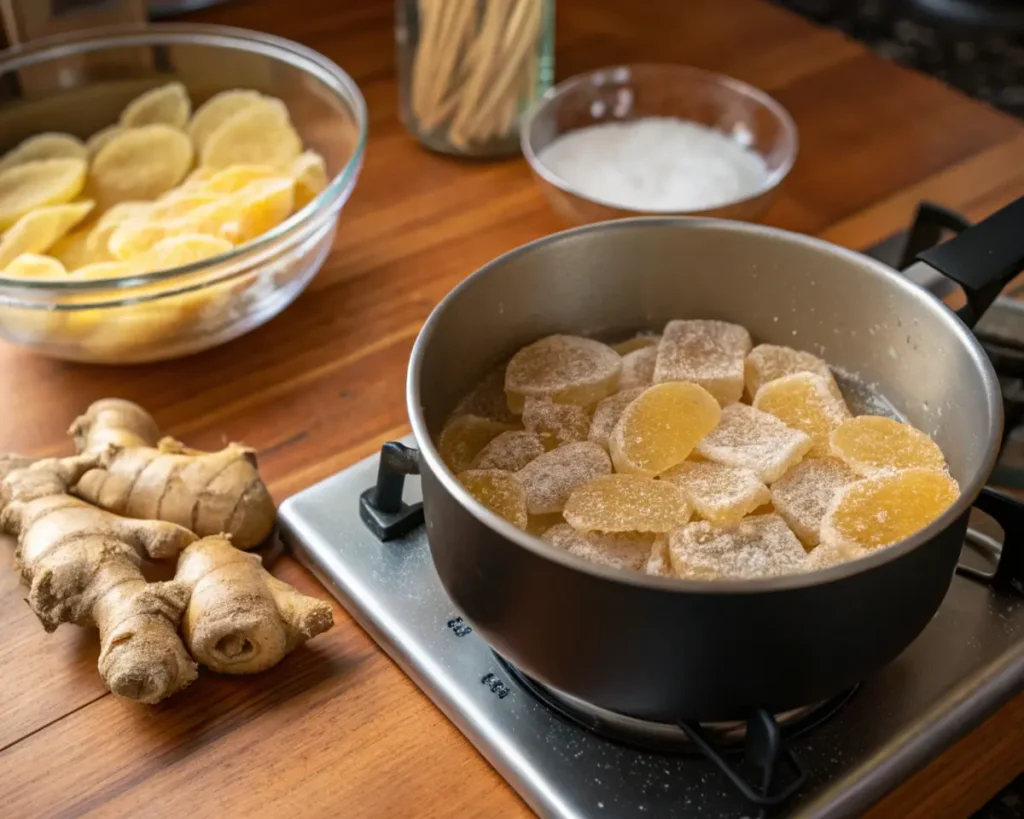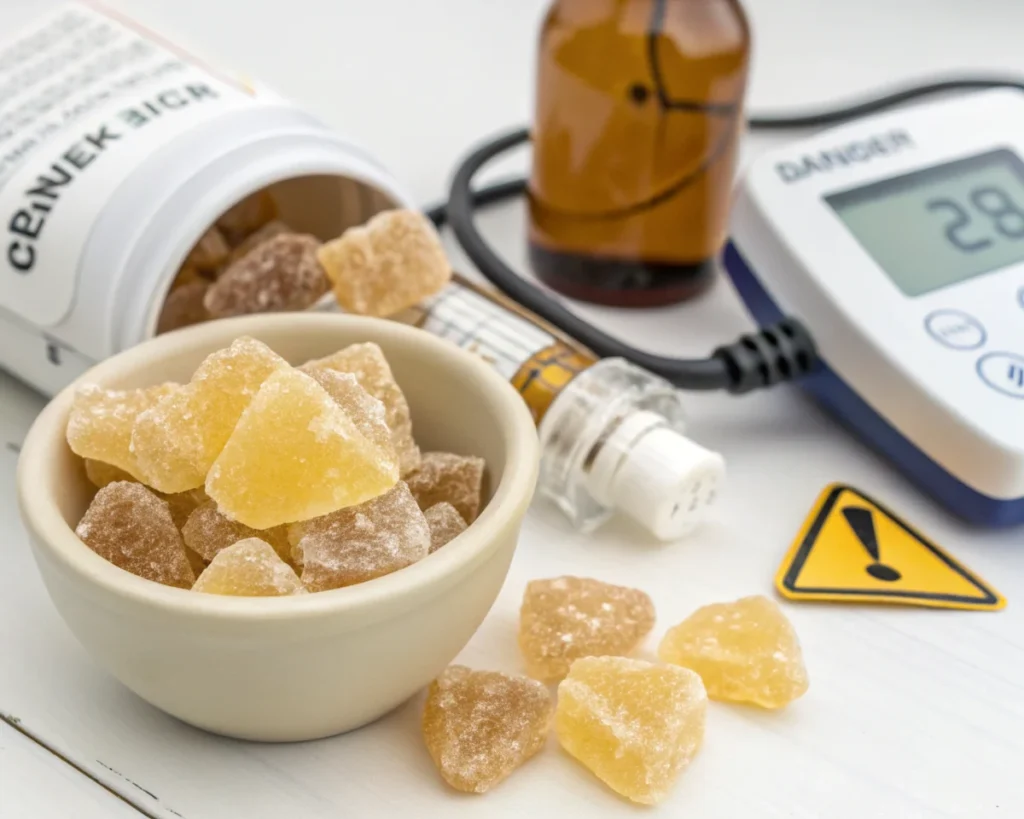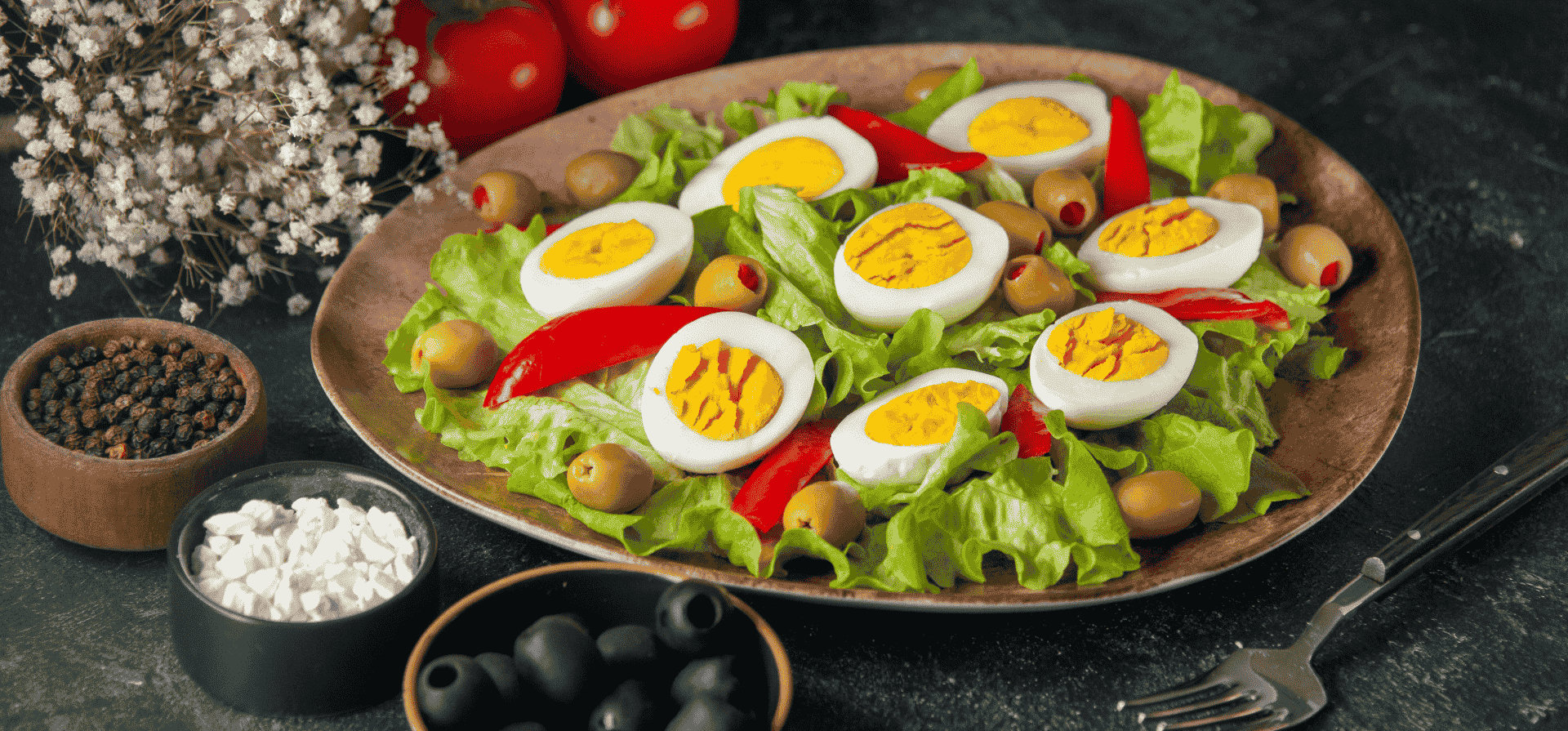Crystallized Ginger: A Sweet, Spicy Superfood
Crystallized ginger is a tasty, versatile treat that’s been around for centuries, loved for both its unique flavor and its numerous health benefits. Whether you’re a fan of adding it to your recipes or enjoying it as a simple snack, this ingredient has earned its place in kitchens worldwide. In this article, we’ll dive deep into the world of crystallized ginger, from its origins to its benefits and uses. You’ll learn about its nutritional profile, how to make it at home, and how you can incorporate it into your diet. Let’s explore the many ways this sweet, spicy delicacy can improve your health and satisfy your taste buds.
Introduction to Crystallized Ginger
What Is Crystallized Ginger?
Crystallized ginger, also known as candied ginger, is made by simmering fresh ginger slices in a sugar syrup and then coating them in sugar. The process of crystallization involves drying out the ginger to create a chewy, sweet, and slightly spicy treat. The final result is a candy-like snack that retains the bold, pungent flavor of ginger while softening its heat and sharpness.
Crystallized Ginger vs. Candied Ginger: What’s the Difference?
While the terms crystallized ginger and candied ginger are often used interchangeably, there’s a subtle difference between the two. Crystallized ginger is typically made with fresh ginger that’s been preserved through crystallization (the process of coating it in sugar and drying it out), while candied ginger may sometimes use preserved ginger or undergo a simpler sugaring process. In practice, the difference is usually minimal, but crystallized ginger tends to be more chewy and moist compared to the drier texture of candied ginger.
Historical Significance and Cultural Uses
Crystallized ginger has a long history, dating back centuries in regions like China and India, where ginger has been revered for its medicinal properties. Over time, crystallized ginger spread across the world, becoming a popular treat in Europe and the Americas. Today, it’s enjoyed not only as a snack but also as a key ingredient in various cuisines, from Indian curries to gingerbread cookies. Its preservation method also made it a valuable option for long journeys, especially in the days before refrigeration, as it could be stored for extended periods.
Health Benefits of Crystallized Ginger
Digestive Aid and Nausea Relief
One of the most well-known health benefits of crystallized ginger is its ability to alleviate nausea and aid digestion. For centuries, ginger has been used as a natural remedy for an upset stomach. Whether you’re dealing with motion sickness, morning sickness during pregnancy, or simply feeling bloated, crystallized ginger can provide quick relief. It works by stimulating the digestive enzymes in the stomach and promoting smoother digestion.
Additionally, crystallized ginger is often recommended for those suffering from nausea related to chemotherapy treatments. Many people report that chewing on crystallized ginger helps settle their stomachs and ease discomfort. So, if you’re looking for a natural way to combat nausea, keeping some crystallized ginger on hand might be a game-changer.
Anti-Inflammatory Properties
Another reason to love crystallized ginger is its powerful anti-inflammatory effects. Ginger contains bioactive compounds like gingerol, which has been shown to reduce inflammation in the body. Chronic inflammation is linked to various health conditions, including arthritis, heart disease, and even cancer. By incorporating crystallized ginger into your diet, you might help reduce inflammation and alleviate symptoms of these conditions.
For example, individuals with joint pain or arthritis often find relief from the anti-inflammatory properties of ginger. Consuming crystallized ginger regularly may help soothe sore joints, reduce swelling, and provide pain relief. Plus, since it’s a natural remedy, it doesn’t carry the side effects that some prescription medications might have.
Antioxidant Effects
The antioxidant properties of crystallized ginger also deserve a mention. Antioxidants help neutralize harmful free radicals in the body, which can contribute to oxidative stress and lead to chronic diseases. By eating crystallized ginger, you’re giving your body a boost of antioxidants that can help prevent cell damage, aging, and even the development of certain cancers. It’s a simple and tasty way to support your overall health and well-being.
Immune System Support
Crystallized ginger also plays a role in boosting the immune system. Ginger has long been valued for its ability to fight off infections and improve the body’s natural defense mechanisms. Thanks to its antimicrobial and antibacterial properties, crystallized ginger can help protect the body from common illnesses like colds and flu. By regularly incorporating it into your diet, you’re giving your immune system the support it needs to stay strong.
Nutritional Profile of Crystallized Ginger
Caloric and Macronutrient Breakdown
When it comes to the nutritional profile of crystallized ginger, it’s important to consider the calorie content, as it can be quite sugary. Typically, crystallized ginger contains around 80 to 100 calories per ounce, depending on the sugar content. Since it’s often coated in sugar, it’s a sweet treat that should be consumed in moderation. However, it does provide more than just empty calories.
In terms of macronutrients, crystallized ginger provides a small amount of carbohydrates, with about 20 grams of carbs per ounce, primarily from sugar. Though it’s not a significant source of protein or fat, crystallized ginger still offers valuable nutrients when enjoyed as part of a balanced diet.
Vitamins and Minerals Present
Crystallized ginger is also a good source of some essential vitamins and minerals. It contains small amounts of vitamin C, which helps support the immune system and skin health. Additionally, ginger is known for its high potassium content, which helps regulate blood pressure and supports heart health. Although crystallized ginger is not a major source of these nutrients, it still provides some benefits as an occasional treat.
Sugar Content and Dietary Considerations
It’s important to note that the sugar content in crystallized ginger can be a concern for those watching their sugar intake or managing conditions like diabetes. Because the ginger is coated in sugar, it may not be the best choice for individuals looking to reduce their sugar consumption. However, crystallized ginger can be enjoyed in moderation, especially if you’re using it as a natural remedy or a flavoring in small amounts.
For those on specific diets like the keto diet or low-carb diets, crystallized ginger may not fit into their eating plan due to its sugar content. However, it can still be a great treat in moderation for others who are not restricted by these guidelines.
How to Make Crystallized Ginger at Home
Ingredients Required
Making crystallized ginger at home is easier than you might think. Here’s a quick overview of the basic ingredients you’ll need:
| Ingredient | Quantity |
|---|---|
| Fresh ginger root | 1 lb (450g) |
| Sugar | 2 cups (400g) |
| Water | 4 cups (960ml) |
| Lemon juice (optional) | 1 tablespoon |
This simple ingredient list is all you need to create your own batch of crystallized ginger. Fresh ginger root provides the zingy, spicy flavor, while sugar and water are used to create the syrup for coating the ginger slices. A bit of lemon juice helps enhance the flavor, but it’s optional. Some people prefer a more intense flavor with a hint of citrus, but it’s not necessary for the crystallization process.
Step-by-Step Preparation Process

Now, let’s get into the step-by-step process of making crystallized ginger:
- Peel the ginger: Start by peeling the fresh ginger root. Use a spoon or vegetable peeler to remove the skin.
- Slice the ginger: Slice the ginger into thin, uniform pieces. You can make them as thick or thin as you prefer, but thinner slices will crystallize faster.
- Boil the ginger: In a large pot, combine the ginger slices and water. Bring it to a boil, then lower the heat and simmer for about 30 minutes, until the ginger becomes tender.
- Prepare the sugar syrup: After simmering, strain the ginger slices and return them to the pot. Add sugar and a bit of lemon juice, then cook the mixture over medium heat until the sugar dissolves and a syrup forms.
- Crystallize the ginger: Continue to cook the ginger in the syrup for about 45 minutes. Stir occasionally to make sure the ginger is evenly coated.
- Dry the ginger: Once the ginger is soft and coated with syrup, transfer it to a wire rack and allow it to dry for several hours or overnight.
- Coat in sugar: Finally, toss the dried ginger in granulated sugar to give it that signature sweet, crystallized coating.
Storage Tips for Freshness
Once your crystallized ginger is ready, store it in an airtight container at room temperature. It can last for several weeks, but for the best flavor and texture, try to consume it within 1-2 weeks. If you’d like to keep it longer, you can store it in the fridge or freezer, though it may lose some of its softness.
Culinary Uses of Crystallized Ginger
In Baking
Crystallized ginger is a fantastic ingredient to use in baked goods. Its sweet, spicy flavor adds a unique kick to your favorite recipes. It works wonderfully in gingerbread cookies, cakes, and muffins. Simply chop it up into small pieces and fold it into your batter. The ginger adds texture and an extra burst of flavor that takes these treats to the next level.
For instance, gingerbread cookies made with crystallized ginger will have an extra depth of flavor, with a delightful chewy bite from the ginger pieces. You can also add it to fruitcakes or pound cakes for a pleasant, unexpected twist.
As a Snack
One of the easiest ways to enjoy crystallized ginger is by simply eating it as a snack. It’s chewy, flavorful, and sweet—just perfect for satisfying a sugar craving or calming your stomach. It’s an excellent option if you need a pick-me-up in the middle of the day or want something light after a meal. It also pairs beautifully with a cup of tea, enhancing your cozy moment with its bold flavor.
In Beverages
Crystallized ginger can also be added to beverages for a flavorful zing. Try adding it to hot tea, where it will dissolve slightly and infuse the drink with a gentle spice. It’s perfect for ginger tea lovers, but you can also experiment by adding it to smoothies, lemonades, or even cocktails for a unique, spicy twist.
In Savory Dishes
While crystallized ginger is often used in sweet recipes, it can also be a game-changer in savory dishes. It adds a sweet-and-spicy element that works well in marinades or glazes for meats, particularly in Asian-inspired dishes. For example, you can incorporate crystallized ginger into a glaze for roast chicken or add it to stir-fries for an unexpected burst of flavor.
If you enjoy experimenting with flavors, give crystallized ginger a try in your next savory recipe—it’s a wonderful way to elevate the taste of your dishes.
These two parts explore how to make crystallized ginger at home and ways you can use it in various recipes. Stay tuned for more as we continue with the health benefits and precautions of crystallized ginger in the next sections!
Potential Side Effects and Considerations

Possible Side Effects
While crystallized ginger offers a lot of health benefits, it’s important to consume it in moderation, as it can have some side effects for certain individuals. One of the main concerns with crystallized ginger is its high sugar content. Since it is often coated in sugar, consuming it in large amounts may contribute to increased calorie intake, which can lead to weight gain over time. Additionally, the sugar could negatively affect individuals with diabetes or those trying to control their blood sugar levels.
Another consideration is that consuming too much ginger, even in crystallized form, could lead to digestive discomfort, including heartburn or an upset stomach. If you’re prone to these issues, it’s best to consume crystallized ginger in small amounts and observe how your body reacts.
Lastly, while rare, some individuals may experience allergic reactions to ginger. If you notice any skin irritation, swelling, or difficulty breathing after consuming crystallized ginger, seek medical attention immediately.
Precautions for Specific Populations
Certain groups should be particularly cautious when consuming crystallized ginger. Pregnant women, for instance, should limit their intake of ginger to avoid any potential risk of complications, such as affecting pregnancy hormones or causing preterm labor. Although ginger is generally considered safe for most pregnant women in moderation, it’s always best to consult a healthcare provider for personalized advice.
People who take blood-thinning medications should also be cautious, as ginger can have a mild blood-thinning effect. In such cases, it’s a good idea to talk to a doctor before regularly consuming crystallized ginger.
Frequently Asked Questions (FAQs)
What Is the Difference Between Crystallized and Candied Ginger?
While crystallized ginger and candied ginger are often used interchangeably, there is a slight difference. Crystallized ginger is typically made by simmering fresh ginger slices in sugar syrup and drying them until they are chewy and covered with sugar crystals. On the other hand, candied ginger may involve a less intense sugaring process and can sometimes be drier. Ultimately, both terms refer to a similar process, but crystallized ginger usually has a more tender, chewy texture.
How Should Crystallized Ginger Be Stored?
To keep crystallized ginger fresh, store it in an airtight container at room temperature. It can last for several weeks, but for the best flavor and texture, it’s best consumed within 1-2 weeks. If you want to keep it longer, you can refrigerate or freeze it, though the texture may change slightly over time.
Can Crystallized Ginger Help with Motion Sickness?
Yes, crystallized ginger has long been used as a natural remedy for motion sickness. The ginger in crystallized form can help calm nausea and reduce symptoms associated with motion sickness. Eating a few pieces before or during travel might help you feel better if you’re prone to motion sickness.
What is crystalized ginger good for?
Crystallized ginger is great for relieving nausea, improving digestion, and reducing inflammation. It’s also known for boosting the immune system and providing antioxidant benefits. Additionally, it makes a delicious snack or addition to various recipes.
Conclusion
Summary of Key Points
To wrap things up, crystallized ginger is a delightful and versatile ingredient with numerous health benefits. From its ability to ease digestive issues and alleviate nausea to its antioxidant properties, this sweet and spicy treat packs a punch when it comes to improving health. It’s also a fantastic addition to your culinary creations, whether you’re baking, making beverages, or enjoying it as a snack. And, as we’ve seen, making it at home is surprisingly simple, with just a few ingredients and easy-to-follow steps.
Final Thoughts
Overall, crystallized ginger offers a tasty way to add flavor and health benefits to your diet. Whether you use it as a remedy for nausea, a snack, or an ingredient in your favorite recipes, it’s a great addition to your kitchen. So, why not give it a try? Experiment with different uses, and you might just find a new favorite way to enjoy this sweet and spicy delight!
Key Takeaway
In summary, crystallized ginger is more than just a flavorful treat—it’s a functional food that provides numerous health benefits, from digestive relief to immune system support. It can be easily incorporated into a variety of dishes and beverages, making it a versatile addition to any kitchen. However, it’s important to consume it in moderation, especially for those with specific health conditions or dietary restrictions. Whether bought or made at home, crystallized ginger is a great way to enjoy the natural goodness of ginger in a sweet, chewy form. So, why not add a little sweetness and spice to your life today?


